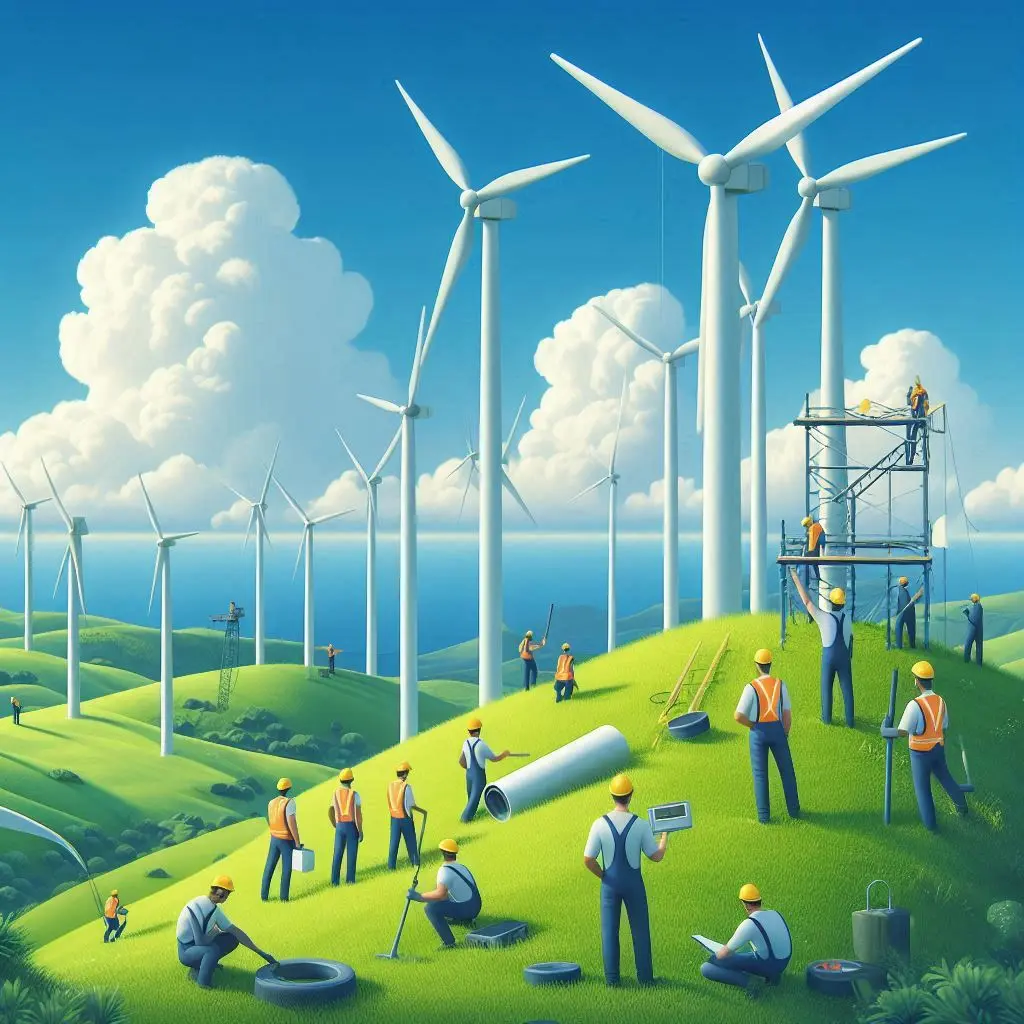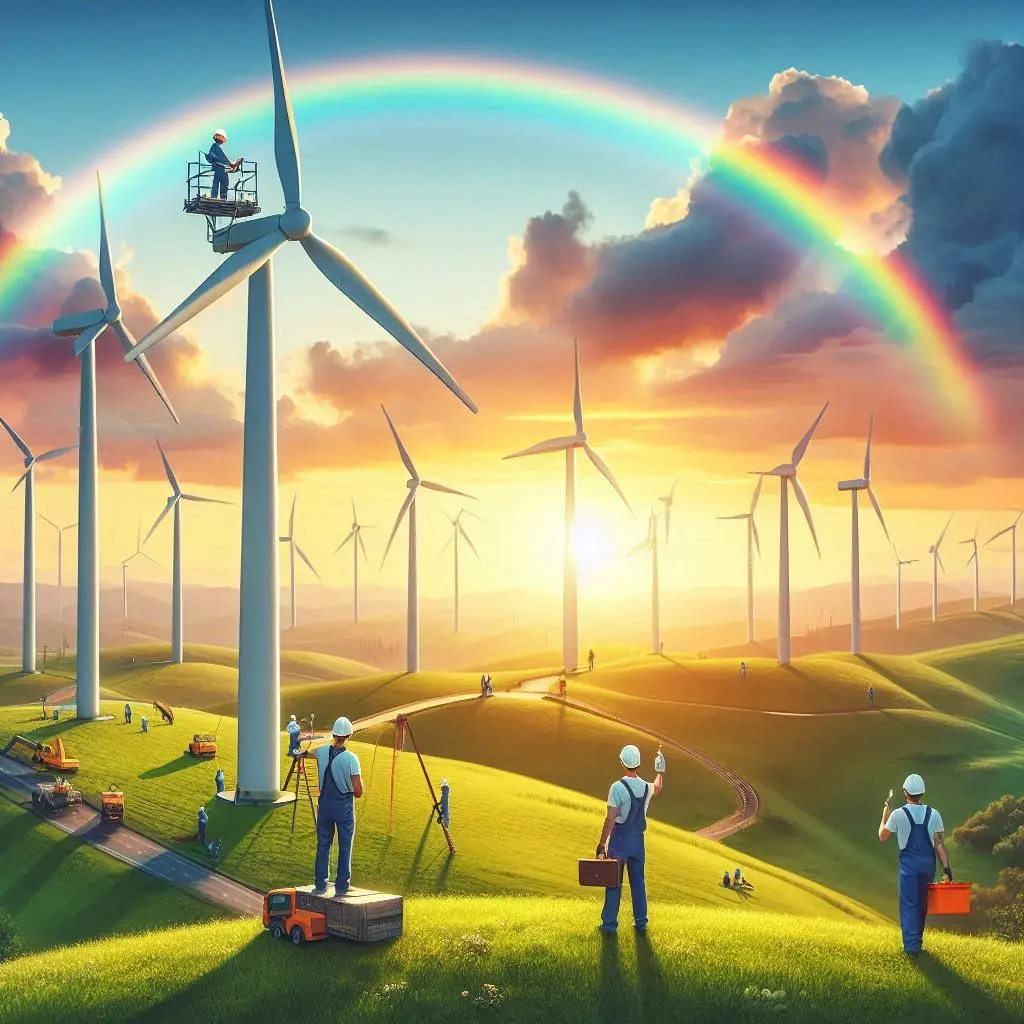Wind Projects: Harnessing the Power of Nature
Wind energy, a cornerstone of the renewable energy revolution, has been gaining momentum globally. From towering onshore turbines to expansive offshore wind farms, the landscape of wind energy projects is as diverse as it is dynamic.
This article delves into the intricacies of wind projects, exploring their development, impact, and future potential.

1. Introduction
Wind energy, derived from the kinetic energy of wind, has been harnessed by humans for centuries. Today, it stands as a pivotal player in the quest for sustainable energy solutions.
The journey from ancient windmills to modern wind turbines is a testament to human ingenuity and the relentless pursuit of cleaner energy sources.
2. History of Wind Energy
The history of wind energy dates back to ancient civilizations. The Persians used windmills as early as 500-900 AD for pumping water and grinding grain. By the 14th century, windmills had become a common sight in Europe, particularly in the Netherlands, where they were used for land drainage.
The modern era of wind energy began in the late 19th century with the advent of electricity. The first wind turbine to generate electricity was built in Scotland in 1887 by Professor James Blyth. However, it wasn’t until the oil crises of the 1970s that wind energy gained significant attention as a viable alternative to fossil fuels.
3. Types of Wind Projects
Wind projects can be broadly categorized into onshore and offshore projects, each with its unique characteristics and challenges.
Onshore Wind Projects
Onshore wind projects are located on land and are the most common type of wind energy projects. They are typically easier and cheaper to install compared to offshore projects. Onshore wind farms can be found in various terrains, from flat plains to mountainous regions.
" The answer, my friend, is blowin’ in the wind. " - Bob Dylan
Key Takeaways:
- Cost-Effective: Lower installation and maintenance costs.
- Accessibility: Easier access for construction and maintenance.
- Environmental Impact: Potential impact on local wildlife and ecosystems.
Offshore Wind Projects
Offshore wind projects are located in bodies of water, usually on the continental shelf. These projects benefit from stronger and more consistent wind speeds compared to onshore projects. However, they are more expensive and complex to install and maintain.
Key Takeaways:
- Higher Energy Output: Stronger and more consistent winds.
- Reduced Land Use: No competition for land space.
- Technical Challenges: Higher installation and maintenance costs.

4. Key Components of Wind Projects
Wind projects consist of several key components that work together to harness wind energy and convert it into electricity.
Wind Turbines: The most visible component, wind turbines consist of blades, a rotor, a nacelle, and a tower. The blades capture wind energy and convert it into rotational energy.
Nacelle: The nacelle houses the gearbox, generator, and other mechanical components. It is mounted on top of the tower and rotates to face the wind.
Tower: The tower supports the nacelle and blades. It is typically made of steel and can range in height from 80 to 120 meters.
Foundation: The foundation anchors the tower to the ground or seabed. Onshore foundations are usually made of concrete, while offshore foundations can be monopiles, jackets, or floating structures.
Electrical System: This includes transformers, cables, and substations that transmit the generated electricity to the grid.

5. Major Wind Projects Around the World
Several wind projects around the world stand out due to their size, innovation, and impact.
Hornsea Project One (UK): The world’s largest offshore wind farm, located off the coast of Yorkshire, with a capacity of 1.2 GW, enough to power over a million homes.
Gansu Wind Farm (China): One of the largest onshore wind farms, with a planned capacity of 20 GW. It is part of China’s ambitious plan to reduce its reliance on coal.
Alta Wind Energy Center (USA): Located in California, this is the largest onshore wind farm in the United States, with a capacity of 1.5 GW.
Walney Extension (UK): Another significant offshore project, with a capacity of 659 MW, located in the Irish Sea.
" Wind power is a clean and renewable source of energy that can help us reduce our dependence on fossil fuels." - Al Gore
| Aspect | Onshore Wind Projects | Offshore Wind Projects |
|---|---|---|
| Location | Land-based | Water-based (usually on the continental shelf) |
| Installation Cost | Lower | Higher |
| Maintenance | Easier and less expensive | More complex and costly |
| Wind Speed | Variable, generally lower | Stronger and more consistent |
| Energy Output | Moderate | Higher |
| Environmental Impact | Potential impact on local wildlife and ecosystems | Less land use impact, but potential marine impact |
| Accessibility | Easier access for construction and maintenance | Challenging access, especially in deep waters |
| Foundation Types | Concrete foundations | Monopiles, jackets, floating structures |
| Job Creation | Significant, especially in rural areas | Significant, with specialized offshore roles |
| Noise and Visual Impact | Can produce noise and alter landscapes | Minimal visual impact from shore, but noise underwater |
| Examples | Gansu Wind Farm (China), Alta Wind Energy Center (USA) | Hornsea Project One (UK), Walney Extension (UK) |
6. Economic and Environmental Impact
Wind projects have a profound impact on both the economy and the environment.
Economic Impact:
- Job Creation: Wind projects create jobs in manufacturing, installation, and maintenance.
- Energy Independence: Reduces reliance on imported fossil fuels.
- Investment Opportunities: Attracts investment in renewable energy infrastructure.
Environmental Impact:
- Reduced Emissions: Wind energy produces no greenhouse gas emissions during operation.
- Land Use: Onshore projects can impact local wildlife and ecosystems, while offshore projects have less land use impact.
- Resource Use: Wind energy is a renewable resource, reducing the depletion of finite fossil fuels.
7. Challenges and Solutions
Despite the benefits, wind projects face several challenges.
Intermittency: Wind is not always available, leading to variability in energy production. Solution: Energy storage systems and grid integration can help manage intermittency.
Noise and Visual Impact: Wind turbines can produce noise and alter landscapes. Solution: Technological advancements and careful site selection can mitigate these impacts.
Wildlife Impact: Wind turbines can pose risks to birds and bats. Solution: Research and monitoring can help develop strategies to minimize wildlife impact.
8. Future of Wind Energy
The future of wind energy looks promising, with advancements in technology and increasing investment driving growth.
Floating Wind Turbines: These allow for wind projects in deeper waters, expanding the potential for offshore wind energy.
Hybrid Projects: Combining wind with other renewable sources, such as solar, can enhance energy reliability and efficiency.
Digitalization: The use of AI and IoT in wind projects can optimize performance and maintenance.

9. Conclusion
Wind projects are a vital component of the global transition to renewable energy. They offer a sustainable solution to meet growing energy demands while reducing environmental impact.
As technology advances and investment increases, the potential for wind energy continues to expand, promising a cleaner and more sustainable future.
10. FAQs
Q1: What is the lifespan of a wind turbine?
A: The average lifespan of a wind turbine is around 20-25 years.
Q2: How much energy can a wind turbine generate?
A: The energy output depends on the turbine’s size and wind conditions. On average, a 2 MW turbine can power around 1,000 homes.
Q3: Are wind turbines noisy?
A: Modern wind turbines are designed to minimize noise, but they can still produce some sound, especially in high winds.
Q4: Can wind energy be stored?
A: Yes, energy storage systems, such as batteries, can store wind energy for use when the wind is not blowing.
Q5: What are the environmental impacts of wind projects?
A: Wind projects have minimal environmental impact compared to fossil fuels, but they can affect local wildlife and ecosystems.
" This page contains affiliate links. If you purchase through these links, I may earn a commission at no additional cost to you. As an affiliate for Amazon and other companies, I earn from qualifying purchases. "